- Home
- Alison Weir
Wars of the Roses
Wars of the Roses Read online
“POWERFUL AND ELEGANT …
A complicated story brilliantly told.”
—Kirkus Reviews
“Elegantly written, revealingly detailed, and effortlessly narrated … Splendid work … Among her gifts, Weir has the two strengths essential to the historian: She writes with equal command about people as individuals and about the nature of power. Throughout, she is a canny and engaging guide to the unspeakably tangled workings of late-medieval political power. Military might, bloodlines, family alliances, regional loyalties, charisma, theatrics and image, revenge, greed, ruthlessness, and expediency all operated in tortuous formations and are here meticulously opened to scrutiny.”
—Boston Globe
“[A] perfectly focused and beautifully unfolded account.”
—Booklist (starred review)
“Stimulating … A well-written, entertaining narrative.”
—Library Journal
A Ballantine Book
Published by The Random House Publishing Group
Copyright © 1995 by Alison Weir
All rights reserved under International and Pan-American Copyright Conventions. Published in the United States by The Random House Publishing Group, a division of Random House, Inc., New York.
Originally published as Lancaster & York in Great Britain in 1995 by Jonathan Cape, Random House, UK Ltd., London.
Ballantine and colophon are registered trademarks of Random House, Inc.
www.ballantinebooks.com
Library of Congress Catalog Card Number: 96-96058
eISBN: 978-0-307-80685-7
v3.1
Contents
Cover
Title Page
Copyright
Illustrations
Introduction
1 The Riches of England
Part I: The Origins of the Conflict
2 A Race of Magnates
3 The Usurping Dynasty
4 The Flower of Christian Chivalry
5 The Child King
6 A Simple and Upright Man
7 ‘A Queen Not Worth Ten Marks’
8 The Daisy Flower
9 Murder at Sea
10 John Amend-All
11 ‘A Great Division between York and Lancaster’
12 ‘A Sudden and Thoughtless Fright’
Part II: The Wars of the Roses
13 The Wars of the Roses
14 An Uneasy Peace
15 ‘A Great and Strong Labour’d Woman’
16 The Paper Crown
17 The Sun in Splendour
18 The Bloody Meadow
19 ‘A Person Well Worthy To Be King’
20 Fugitives
21 ‘Now Take Heed What Love May Do’
22 Secret Negotiations
23 The Queen and M. de Warwick
24 The Readeption of Henry VI
25 ‘The Perfect Victory’
26 To Tewkesbury and the Tower
Simplified Genealogical Tables
Photo Inserts
Dedication
Acknowledgements
Bibliography
Other Books by This Author
About the Author
Illustrations
PLATES
1 Richard II, portrait by an unknown artist in Westminster Abbey c. 1395 (by courtesy of the Dean and Chapter of Westminster)
2 John of Gaunt, late sixteenth-century portrait attributed to Luca Cornelli (by kind permission of the Duke of Beaufort; photograph by Peter A. Harding)
3 Henry IV, electrotype of the tomb effigy in Canterbury Cathedral (National Portrait Gallery, London)
4 Henry V, late fifteenth-century portrait by an unknown artist in the Royal Collection (© 1995 Her Majesty Queen Elizabeth II)
5 Humphrey, Duke of Gloucester (kneeling before the Man of Sorrows), from a Book of Psalms made for him c. 1420–30 (by permission of the British Library: Royal 2 B I f.8)
6 Cardinal Henry Beaufort, tomb effigy in Winchester Cathedral (by courtesy of the Dean and Chapter of Winchester)
7 Henry VI, portrait by an unknown artist c.1530 (National Portrait Gallery, London)
8 Henry VI, late sixteenth/early seventeenth-century portrait by an unknown artist (National Portrait Gallery, London)
9 René, Duke of Anjou, portrait miniature by Nicholas Froment from the Matheron Diptych, c. 1476, in the Louvre Museum, Paris (© photograph R.M.N.)
10 Margaret of Anjou, portrait medallion by Pietro de Milano, c. 1462–3 (by courtesy of the Trustees of the Victoria and Albert Museum)
11 Richard, Duke of York, from a stained-glass window in the Trinity Chapel at St John the Baptist, Cirencester (by kind permission of the Vicar and Churchwardens of Cirencester Parish Church; photograph by Bryan Berkeley)
12 The Falcon and Fetterlock badge of the mediaeval dukes of York, from the gates of Henry VII’s Chapel in Westminster Abbey (by courtesy of the Dean and Chapter of Westminster)
13 Jack Cade’s rebellion of 1450, from Les Chroniques de France, c. 1500 (by permission of the British Library: Royal 20 E 111 f.28)
14 Plucking the Red and White Roses in the Temple Gardens, 1910, by Henry A. Payne, House of Commons East Corridor (© RCHME Crown Copyright)
15 Ludlow Castle (© RCHME Crown Copyright)
16 Interior of Westminster Hall, looking south, c. 1925 (Farmer Collection, House of Lords Record Office)
17 Edward IV, portrait by an unknown artist c. 1530 (National Portrait Gallery, London)
18 Elizabeth Wydville, portrait by an unknown artist c. 1465 (by courtesy of the President and Fellows of Queens’ College, Cambridge)
19 Richard Neville, Earl of Warwick, portrayed as a weeper on a tomb in St Mary’s Church (photograph by Marianne Majerus)
20 George, Duke of Clarence and his family, from the Rous Roll c. 1483–5 (by permission of the British Library: Add.48976 figs. 58–60)
21 Edward IV sets sail from Flushing, from a fifteenth-century manuscript (by permission of the British Library: Harley 7353 no. 10)
22 Edward IV watches the execution of the Duke of Somerset, from Historie of the Arrival of Edward IV, late fifteenth century (University Library of Ghent: MS 236)
23 The Oratory in the Wakefield Tower at the Tower of London (Historic Royal Palaces Photo Library)
MAPS
English possessions in France during the Hundred Years War
England during the Wars of the Roses
Introduction
When I was working on my last book, The Princes in the Tower, I was aware that in some respects I was telling only half a story. I was writing about the final phase of that conflict so picturesquely named the Wars of the Roses, a conflict that lasted for more than thirty years, from 1455 to 1487. There were, in fact, two Wars of the Roses; the first, lasting from 1455 to 1471, was between the royal houses of Lancaster and York, and the second, from 1483 to 1487, was between the royal houses of York and Tudor. Having touched only briefly on the former in The Princes in the Tower, which describes in some detail the second phase of the wars, I felt that a prequel might be an interesting book with which to follow it. This present book, then, is the story of Lancaster and York and the first of the Wars of the Roses.
During the course of my research, I have studied many sources, both ancient and modern, and of the modern ones nearly all focus primarily upon the practical and military aspects of my subject. This book will naturally touch upon those matters, and in some detail in parts, but my main intention has been to portray the human side of history – the people and personalities involved, the chief protagonists in one of the most fascinating and long-drawn-out feuds in English history.
At the centre of this bloody faction fight was the pathetic figure of the mentally unstable Henry VI,
whose ineptitude in government and mental incapacity gave rise to political instability, public discontent, and dissensions between the great landed magnates that in turn led ultimately to war and a bitter battle over the throne itself. Henry’s chief rival was Richard Plantagenet, Duke of York, the man who should have been king, according to the law of primogeniture as it was then understood. After York’s death, his claim to the throne was inherited by his son, who became King Edward IV, a ruthless charmer who would in the end bring about the ruin of the House of Lancaster.
This book is also the story of a woman’s bitter and tenacious fight for her son’s rights. Henry’s queen, Margaret of Anjou – who was accused by her enemies of having planted a bastard in the royal nursery – took up arms in the cause of Lancaster and battled over many years and against seemingly insurmountable odds for the rights of her husband and child. This was remarkable in itself, for she was a woman in a violent man’s world, in which most members of her sex were regarded as movable goods, chattels and political nonentities.
There are many other human faces in the unfolding pageant of treason and conflict. Margaret’s son, Edward of Lancaster, inured to violence at an early age, shocked his contemporaries by his callous precocity. Richard Neville, Earl of Warwick – ‘Warwick the Kingmaker’ – was the archetypal over-mighty subject of the late Middle Ages, who raised and deposed kings, yet whose loyalty, in the final analysis, was only to himself. The Wars of the Roses would not only bring about the fall of a royal dynasty but also that of magnates such as Warwick.
I have tried to present the members of the royal houses of Lancaster and York as real people, identifiable by their personal characteristics and foibles, and not just names on a tangled family tree. The Beauforts, bastard descendants of John of Gaunt, lorded it as princes at court and, some said, in the Queen’s bed. The Tudors were also royal issue of dubious lineage, and – like the Beauforts – were staunchly loyal to the House of Lancaster, whose heirs they later claimed to be. There are the kings – neurotic and extravagant Richard II, the usurper Henry IV, whose reign was marred by rebellions and crippling ill-health, and that cold warrior, Henry V, the people’s hero, whose misjudged foreign policy led to disaster for his son, Henry VI. Then there are the queens: the chic, amoral Katherine of Valois, who found love with a Welsh squire after the death of her husband, Henry V; and Elizabeth Wydville, whose glacial beauty masked greed and ruthlessness. Besides these, our story is peopled with colourful, mysterious or tragic figures, from the notorious Jack Cade, who led a revolt, to the sadistic John Tiptoft, Earl of Worcester; and from a host of mighty lords to Warwick’s fragile and ill-fated daughters, Isabel and Anne Neville. All were involved in one way or another in the conflict. This is indeed a history of factions, yet it was the people who made up those factions that make it a tale of absorbing interest.
The history of the Wars of the Roses has been told many times and by many historians, yet today it is unfashionable to follow the Tudor view that the origins of these wars lay in the deposition of Richard II, which took place more than fifty years before their outbreak. However, it is indeed possible to trace the roots of the conflict to that time, and in order to understand the causes of the Wars of the Roses and the dynastic heritage of the chief protagonists, we need to go back even further, to the founding of a race of magnates of royal blood by that most prolific of Plantagenet kings, Edward III. Thus this book tells not just the story of the Wars of the Roses but also that of the houses of Lancaster and York up to the year 1471.
Sources for this period are meagre and often ambiguous, yet much research has been done over the last hundred years to illuminate a little for us what is often described as the twilight world of the fifteenth century. Many misconceptions have been swept away, yet even so the dynastic conflict still confuses many. My aim has been throughout to eliminate that confusion and try to present the story in chronological sequence, clarifying the problems of the royal succession in an age in which no certain rules of inheritance applied. I have also tried to bring the world of the fifteenth century to life by introducing as much contemporary detail as space permits, in order to make the subject relevant to any reader, academic or otherwise. Chiefly, however, I have tried to re-tell an astonishing and often grim story of power struggles in high places that involved some of the most charismatic figures in English history.
This story begins in 1400 with the murder of one king, and ends in 1471 with the murder of another. One murder could be said to have been a direct result of the other. The story of what happened between 1400 and 1471, which is the story told in this book, answers the question: how?
Alison Weir
Surrey
February 1995
1
The Riches of England
In 1466 a Bohemian nobleman, Gabriel Tetzel, visited England and described it as ‘a little, sea-girt garden’. The Italian scholar Polydore Vergil, writing at the end of the fifteenth century, was impressed by the country’s
delectable valleys, pleasant, undulating hills, agreeable woods, extensive meadows, lands in cultivation, and the great plenty of water springing everywhere. It is truly a beautiful thing to behold one or two thousand tame swans upon the River Thames. The riches of England are greater than those of any other country in Europe. There is no small innkeeper, however poor and humble he may be, who does not serve his table with silver dishes and drinking cups.
England, wrote Piero da Monte, papel envoy to the court of Henry VI, was ‘a very wealthy region, abounding in gold and silver and many precious things, full of pleasures and delights’.
Much of the land was then covered by forest and woodland. Flocks of sheep were to be seen everywhere, for the prestigious wool trade was the life-blood of the kingdom. Cattle, too, were much in evidence, as were herds of deer. Arable land was often still divided into the open strips typical of feudal farming, but in many places there were abandoned villages, fallen into decay around ruined churches. The Warwickshire antiquarian John Rous speaks of ‘the modern destruction of villages’ being ‘a national danger’. Many villages had disappeared after a large proportion of their inhabitants had died in the great epidemic of plague known as the Black Death of 1348–9. This depopulated some villages, and left others with too few inhabitants to cultivate the land. Those who remained were often able to negotiate cash wages in return for their labour and sometimes to exploit the social mobility that this new development gave them by moving elsewhere. Other villages had been swallowed up by farmers and landowners enclosing land that had formerly been common with hedges and fences, so as to provide grazing for wool-producing sheep.
There were 10,000 townships in England, but nearly all were the size of many modern villages. London was by far the largest city: around 60–75,000 people lived there. York, the second most important city, had 15,000 inhabitants, lesser towns perhaps 6,000 at most. Most towns and cities were bounded by the confines of their walls, and nestled in a rural environment. Trade centred on them and it was controlled by merchant guilds.
There was a network of roads linking towns and villages, but few minor roads. The upkeep of roads was generally the responsibility of local landowners, but they were often less than conscientious. In many parts of England travellers were obliged to hire local guides to see them to their destination, and roads were often rendered impassable by rain and mud. Contemporary records indicate that the climate was colder and wetter than it is now.
By 1485, England had a population of between 750,000 and 3,000,000. Estimates vary because the only available sources are the Poll Tax returns of 1381 and parliamentary records dated 1523–4. What is certain, however, is that England’s population was shrinking during the fifteenth century, and also that many people moved to the great wool-cloth producing areas in Yorkshire, East Anglia and the West Country. About nine-tenths of the population worked on the land; Venetian visitors noted how few people inhabited the countryside, and commented that the population of the realm did ‘not appear to bear an
y proportion to her fertility and riches’.
The Venetians saw the English as ‘great lovers of themselves. They think that there is no other world than England.’ Englishmen were deeply conservative: ‘If the King should propose to change any old established rule, it would seem to every Englishman as if his life were taken away from him.’ Foreigners, or ‘strangers’, as the insular English called them, were resented, and tended to live in tight communities, mainly in London, which was more cosmopolitan, or in East Anglia, where many Flemish weavers settled.
The Burgundian chronicler Philippe de Commines thought the English a choleric, earthy and volatile people, who nevertheless made good, brave soldiers. In fact he regarded their warlike inclinations as one of the chief causes of the Wars of the Roses. If they could not fight the French, he believed, they fought each other.
Many foreigners were impressed with English standards of living. One Venetian remarked that everyone wore very fine clothes, ate huge meals and drank vast amounts of beer, ale and wine. The roast beef, commented Vergil, ‘is peerless’. The Venetian ambassador was guest of honour at a banquet given by the Lord Mayor of London which lasted ten hours and was attended by a thousand people. What impressed him most, though, was the absolute silence in which the proceedings were conducted. This reflected the current English preoccupation with manners and etiquette. His retinue were moved to comment upon the extreme politeness of the islanders.
Northerners and southerners were seen as two distinct peoples – southerners were perceived as sophisticated, better educated, civilised, treacherous, even cowardly, being said to resemble Homer’s character Paris rather than the martial Hector. Northerners were regarded as brash, proud, fierce, warlike, violent, rapacious and uncouth. Their reputation for plundering was notorious, due no doubt to the primitive conditions in which they lived, for while southerners enjoyed luxuries, northerners subsisted on the breadline. As a result southerners feared northerners as much as northerners resented them.

 Richard III and the Princes in the Tower
Richard III and the Princes in the Tower Britain's Royal Families: The Complete Genealogy
Britain's Royal Families: The Complete Genealogy The Lady in the Tower: The Fall of Anne Boleyn
The Lady in the Tower: The Fall of Anne Boleyn Six Wives of Henry VIII
Six Wives of Henry VIII Elizabeth of York: A Tudor Queen and Her World
Elizabeth of York: A Tudor Queen and Her World Captive Queen
Captive Queen Innocent Traitor
Innocent Traitor The Marriage Game
The Marriage Game A Dangerous Inheritance
A Dangerous Inheritance Katherine of Aragón: The True Queen
Katherine of Aragón: The True Queen The Marriage Game: A Novel of Queen Elizabeth I
The Marriage Game: A Novel of Queen Elizabeth I Princes in the Tower
Princes in the Tower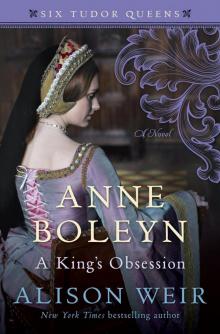 Anne Boleyn: A King's Obsession
Anne Boleyn: A King's Obsession Traitors of the Tower
Traitors of the Tower Mistress of the Monarchy: The Life of Katherine Swynford, Duchess of Lancaster
Mistress of the Monarchy: The Life of Katherine Swynford, Duchess of Lancaster Queens of the Conquest: England’s Medieval Queens
Queens of the Conquest: England’s Medieval Queens Eleanor of Aquitaine: A Life
Eleanor of Aquitaine: A Life Mary, Queen of Scots, and the Murder of Lord Darnley
Mary, Queen of Scots, and the Murder of Lord Darnley Henry VIII: The King and His Court
Henry VIII: The King and His Court Queen Isabella: Treachery, Adultery, and Murder in Medieval England
Queen Isabella: Treachery, Adultery, and Murder in Medieval England Katheryn Howard, the Scandalous Queen
Katheryn Howard, the Scandalous Queen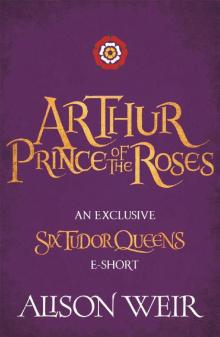 Arthur- Prince of the Roses
Arthur- Prince of the Roses The Wars of the Roses
The Wars of the Roses Eleanor of Aquitaine: By the Wrath of God, Queen of England
Eleanor of Aquitaine: By the Wrath of God, Queen of England Mary Boleyn: The Great and Infamous Whore
Mary Boleyn: The Great and Infamous Whore Jane Seymour: The Haunted Queen
Jane Seymour: The Haunted Queen Anna of Kleve, the Princess in the Portrait
Anna of Kleve, the Princess in the Portrait Lancaster and York: The Wars of the Roses
Lancaster and York: The Wars of the Roses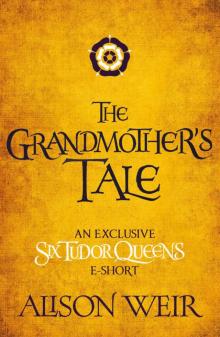 The Grandmother's Tale
The Grandmother's Tale The Princess of Scotland (Six Tudor Queens #5.5)
The Princess of Scotland (Six Tudor Queens #5.5) The Lady Elizabeth
The Lady Elizabeth Katherine Swynford: The Story of John of Gaunt and His Scandalous Duchess
Katherine Swynford: The Story of John of Gaunt and His Scandalous Duchess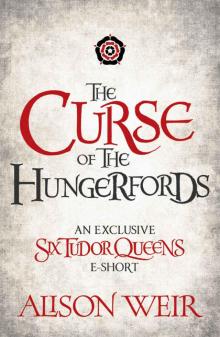 The Curse of the Hungerfords
The Curse of the Hungerfords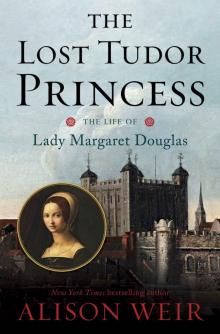 The Lost Tudor Princess: The Life of Lady Margaret Douglas
The Lost Tudor Princess: The Life of Lady Margaret Douglas Eleanor of Aquitaine
Eleanor of Aquitaine Mistress of the Monarchy
Mistress of the Monarchy The Lost Tudor Princess
The Lost Tudor Princess Henry VIII
Henry VIII Anne Boleyn, a King's Obsession
Anne Boleyn, a King's Obsession A Dangerous Inheritance: A Novel of Tudor Rivals and the Secret of the Tower
A Dangerous Inheritance: A Novel of Tudor Rivals and the Secret of the Tower Elizabeth of York
Elizabeth of York Katherine of Aragon, the True Queen
Katherine of Aragon, the True Queen Katherine Swynford
Katherine Swynford Wars of the Roses
Wars of the Roses Queens of the Conquest
Queens of the Conquest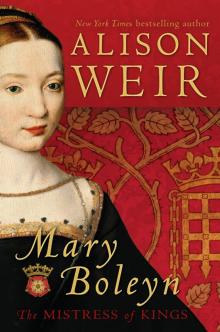 Mary Boleyn
Mary Boleyn Britain's Royal Families
Britain's Royal Families The Tower Is Full of Ghosts Today
The Tower Is Full of Ghosts Today Life of Elizabeth I
Life of Elizabeth I Anne Boleyn A King's Obssession
Anne Boleyn A King's Obssession Lancaster and York
Lancaster and York Jane Seymour, the Haunted Queen
Jane Seymour, the Haunted Queen Queen Isabella
Queen Isabella The princes in the tower
The princes in the tower